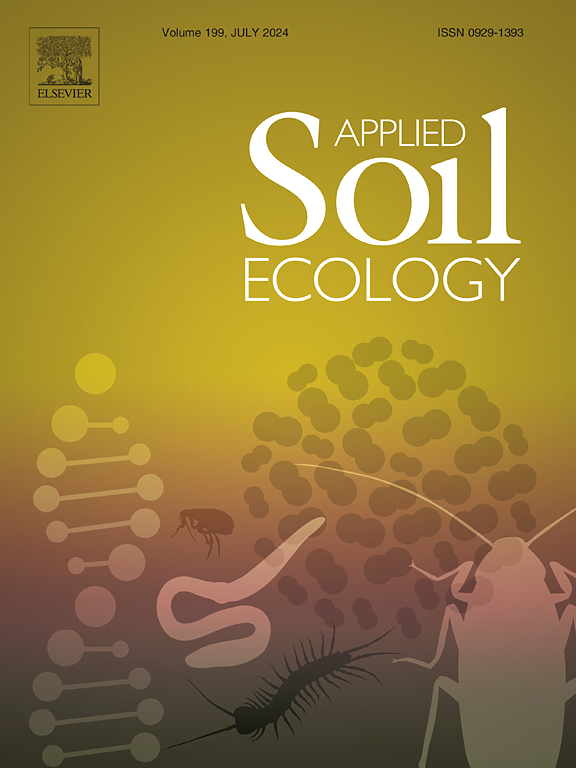在热带稀树草原上,蜣螂的功能行会介导种子的二次传播
IF 4.8
2区 农林科学
Q1 SOIL SCIENCE
引用次数: 0
摘要
种子传播是一种非常重要的生态系统服务,可以通过两种方式进行:一次传播或二次传播。二次种子散播是在主要散播者(主要是食草脊椎动物)粪便中的种子被移走后发生的。蜣螂与种子的二次传播直接相关,几乎完全负责这种传播方式。根据它们操纵资源的方式,可以将它们划分为不同的功能行会,即:内啮齿类(直接在资源上筑巢和取食)、副啮齿类(挖掘隧道并将部分粪便埋在资源下方或附近)和远啮齿类(清除部分资源并将其埋在隧道中)。在这里,我们研究了在重要的热带稀树草原--巴西塞拉多(Cerrado)--中,地上和地下的次生种子散播如何受到功能行会和蜣螂大小的影响。我们的主要研究结果表明,paracoprids 在地面上进行种子的水平传播,而 telecoprids 在地面和地下的水平传播中都很重要。副栉水母和远缘栉水母在种子传播中起着互补作用。这两个类群对维持种子传播的生态系统服务至关重要,并有可能促进种子的成功和存活。此外,蜣螂还能通过种子的二次传播,帮助维持和保护塞拉多地区的重要植物物种。这有可能提高该生物群落中土壤退化地区恢复项目的成功率。本文章由计算机程序翻译,如有差异,请以英文原文为准。
The functional guilds of dung beetles mediate secondary seed dispersal in a tropical savanna
Seed dispersal is an ecosystem service of great importance and can be carried out in two ways: primary or secondary dispersal. Secondary seed dispersal occurs after seeds present in the dung of primary dispersers, mostly herbivorous vertebrates, have been displaced. Dung beetles are directly related to secondary seed dispersal and are almost entirely responsible for this type of dispersal. They can be classified in functional guilds according to the way they manipulate the resource, namely, as: endocoprids (nest and feed directly on the resource), paracoprids (dig tunnels and bury parts of the feces below or close to the resource), and telecoprids (remove a portion of the resource and bury it in tunnels). Here, we investigate how secondary seed dispersal above and below ground was affected by functional guild and dung beetle size in an important tropical savanna, the Brazilian Cerrado. Our main findings reveal that paracoprids perform horizontal dispersal of seeds above ground, and telecoprids are important for horizontal dispersal both above and below ground. Paracoprids and telecoprids act in a complementary way in seed dispersal. These two guilds are crucial for the maintenance of the ecosystem service of seed dispersal and can potentially contribute to the success and survival of seeds. Furthermore, dung beetles can favor the maintenance and conservation of essential plant species for the Cerrado through secondary seed dispersal. That could potentially increase the success of projects to restore areas with degraded soil in the biome.
求助全文
通过发布文献求助,成功后即可免费获取论文全文。
去求助
来源期刊

Applied Soil Ecology
农林科学-土壤科学
CiteScore
9.70
自引率
4.20%
发文量
363
审稿时长
5.3 months
期刊介绍:
Applied Soil Ecology addresses the role of soil organisms and their interactions in relation to: sustainability and productivity, nutrient cycling and other soil processes, the maintenance of soil functions, the impact of human activities on soil ecosystems and bio(techno)logical control of soil-inhabiting pests, diseases and weeds.
 求助内容:
求助内容: 应助结果提醒方式:
应助结果提醒方式:


